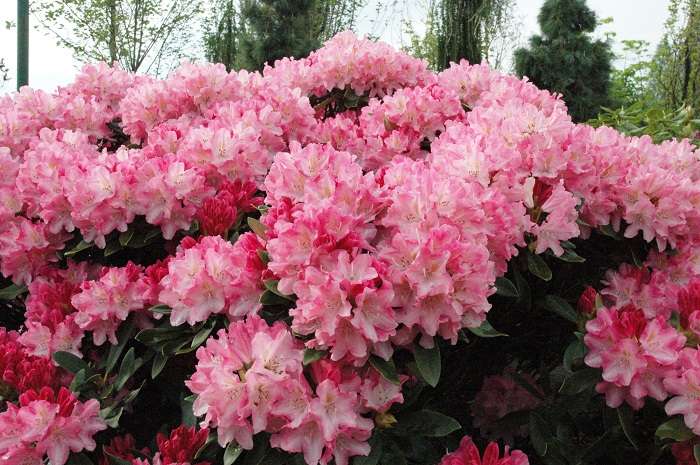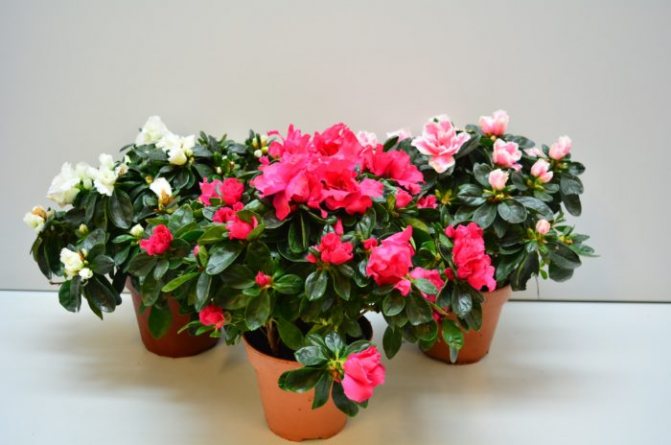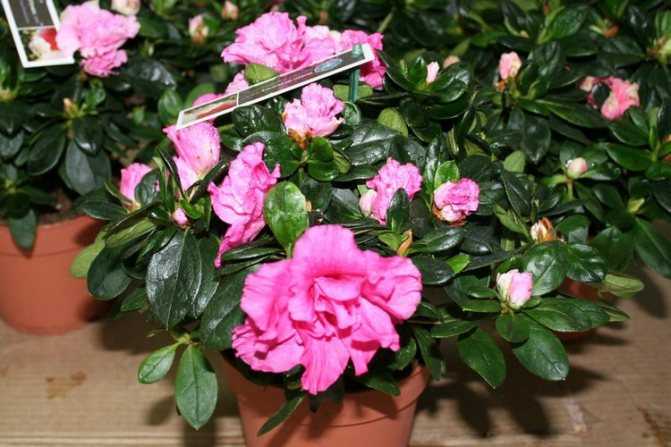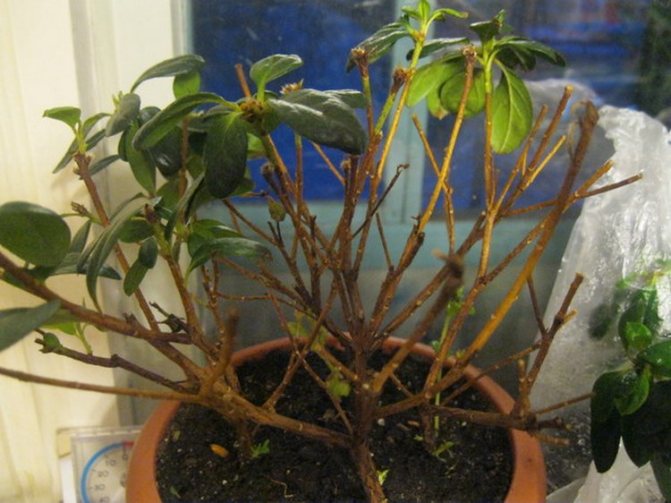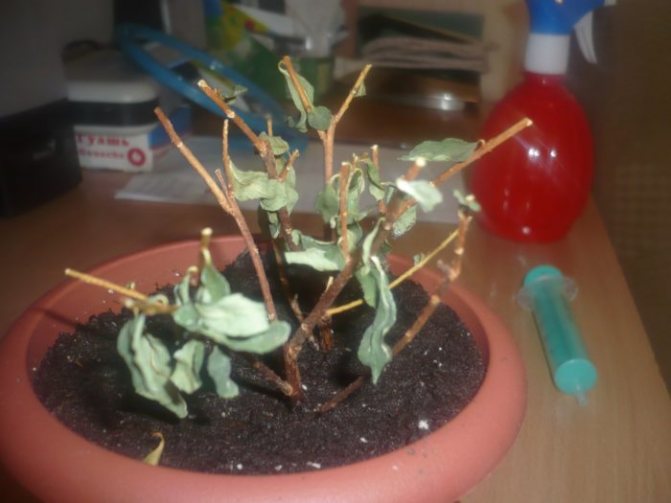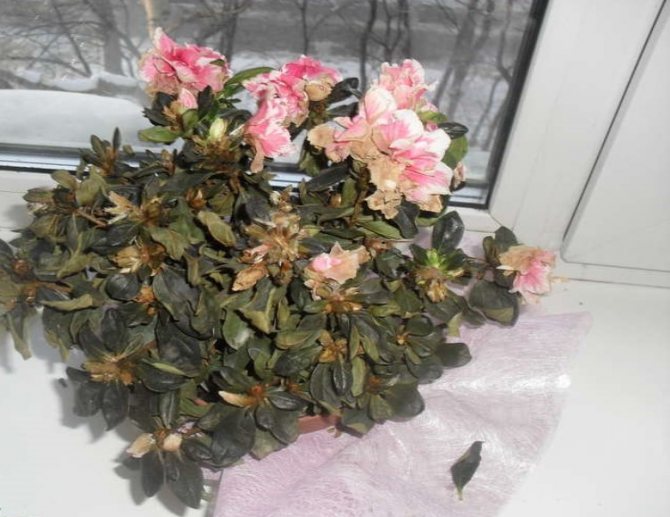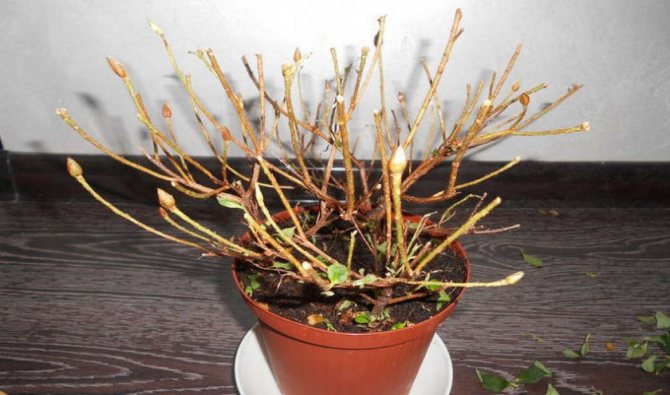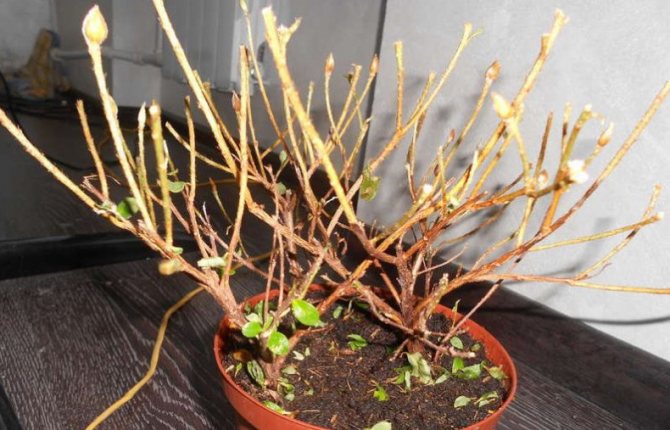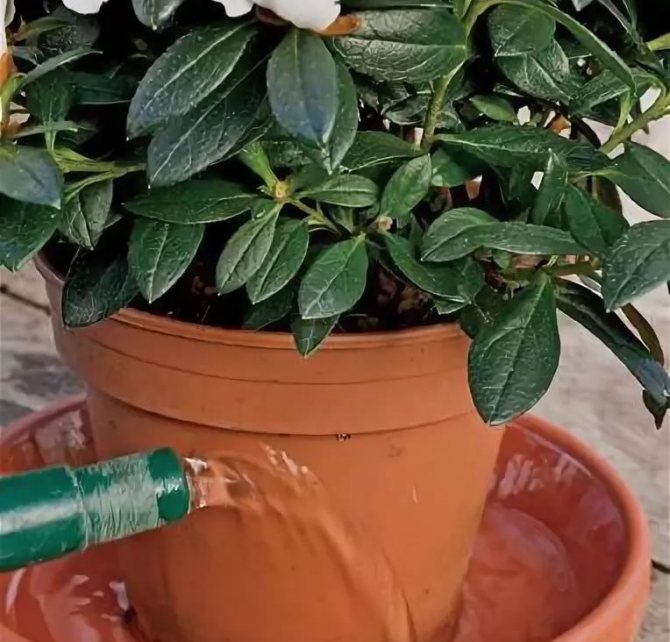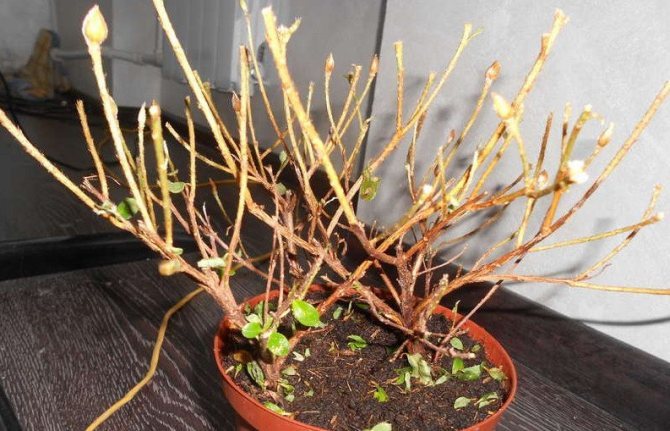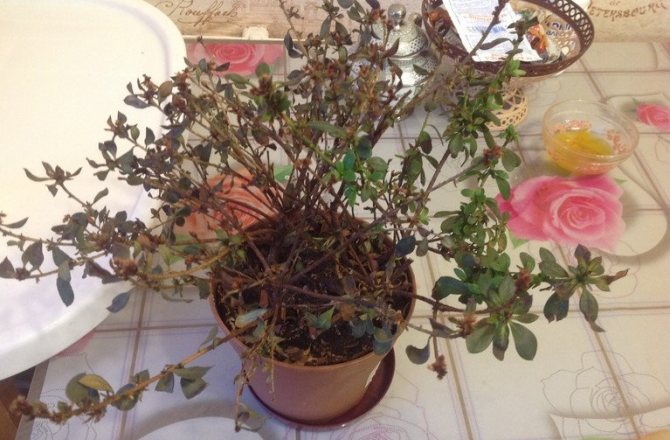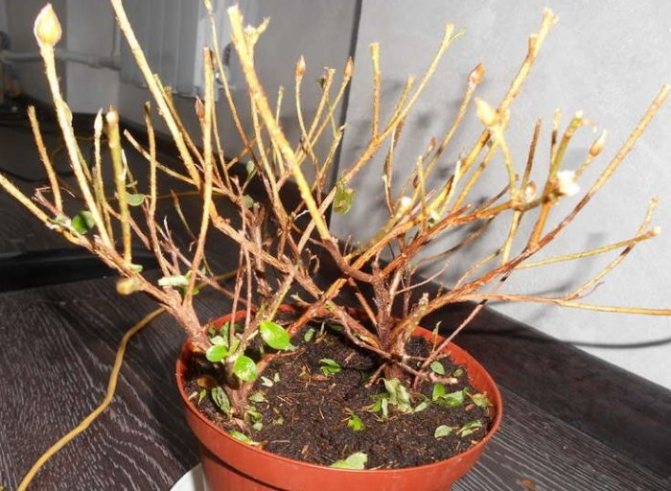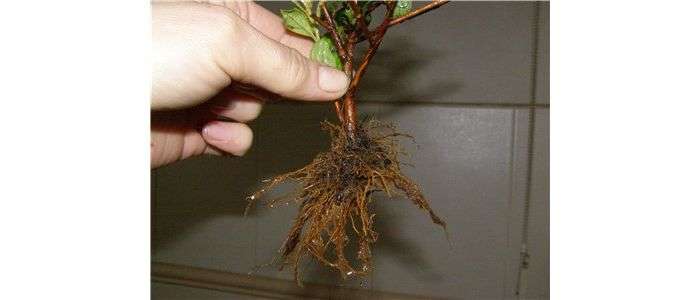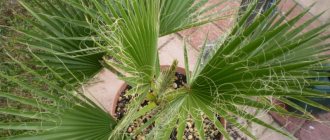Azalea occupies its niche in the garden classification. This is a plant of a separate variety, belonging to the rhododendrons. It has many varieties, but there are certain parameters that are characteristic of all plants: height from 30 centimeters to three meters, colors of different shades: red, blue, white, pink. Azalea looks attractive both in the summer cottage and on the windowsill. Its varieties are divided into deciduous and evergreen. The last variety is referred to as "Japanese", they bloom on May days, reveal themselves in full beauty. Deciduous ones bloom in June, and the leaves are shed in autumn. Many are embarrassed that azalea can lose foliage, inexperienced gardeners worry that the plant is sick. We will deal with cases when indoor azalea sheds leaves for natural reasons, and when they turn brown and dry out due to illness, we will show a photo and tell you what to do for treatment and care at home.
How to revive a dried azalea
Many fans of beauty dream of receiving fresh flowers in a pot as a gift. The exquisite shrub of the rhododendron family pleases and delights with amazing flowers for a certain time. If the desired gift does not receive due attention from its owner, then over time the flowers and leaves fall off, individual branches dry up, then the whole plant dies. The question arises: "How to revive a dried azalea?"

Methods for restoring dried azalea
A few simple tricks are able to revive a potted flower, but the revitalization process takes a long time. First, you need to cut off all dry branches with dead buds. Specimens with live shoots are subject to restoration.
Sequence of resuscitation actions
Remove the azalea from the pot. Place the bush in a spacious bowl of cool water. Gently peel the roots until the substrate is completely eliminated without damaging them. Rinse roots, remove rot. Hold the bush for half an hour in water with the addition of a biological product. Cut off all dry and withered leaves. Transplant into new soil. Water regularly 2 times a week with settled life-giving moisture.
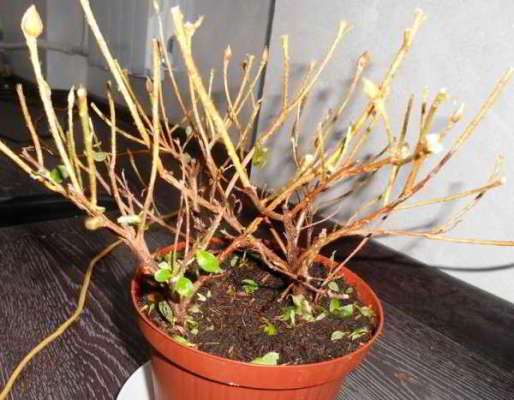

Transplant rules
Increase the width of the container with each annual transshipment. Include acidic deciduous soils, peat, needles, sand in the soil, add ash or activated carbon, and shoot growth stimulants.
Mandatory drainage. Put expanded clay at the bottom. Moderate watering for the first 12 hours after transplanting. On the second day, cover the dishes with ice, pour over.
Important! Do not injure the root system. Young bushes require annual transplants, for adults, one transshipment every 2-3 years is enough.
Recovery after transplant
Azalea bushes should be placed in shaded areas of the room. Dissolve 5 drops of medicinal boric acid or lemon juice in a liter of settled (preferably melt) water. Water the rhododendron with the resulting solution for several days until it rises. Feed with a growth stimulant once a week. 2-3 drops are enough for a glass of drug liquid.
The transplanted azalea should be exposed to a draft. In the summer heat, you can put it in the refrigerator for the whole day. It is useful to put pine or spruce needles on the surface of the soil.Cold watering is done once every two days.
Important! It is forbidden to place pots on windowsills over heating radiators. This is the main reason for the drying and falling off of buds and leaves.


Drought recovery
Wet expanded clay should be placed in the pallet. Spray the leaves of the bush several times a day. During the flowering period, cancel the procedure. Place the pot in a bucket of water for a few minutes. Put a bag on it and leave until new leaves appear with daily 10-minute ventilation. Spray with growth stimulants.
Important! The death of the bush is caused by water stagnation and direct sunlight.
Pest control
At home, the plant suffers from the attacks of spider mites, moths. When they first appear, the bush should be treated with a weak solution of potassium permanganate and soap. Special chemicals are used for severe lesions. Proper care will save the azalea from drying out, there will be no need to carry out revitalization procedures. The positive energetic attitude of her mistress will greatly help in the resuscitation of a capricious beauty.
Signs of wilting - how to quickly and effectively revive the plant
One of the main reasons why azalea leaves dry and fall off is the different ratio of moisture that enters the soil and moisture that evaporates from it. The weakened parts of the plant begin to fade first, this is explained by the struggle between different organs of the flower for water. With the continuing drought, the leaves of the plant begin to fall down, gradually losing their elasticity, becoming soft and loose. The growth and further development of culture stops.
Also, the plant begins to dry out with a weakened root system, when it can no longer fully perform its absorbing function. In this case, rehabilitation measures should be carried out at the first signs of wilting: replenish water supplies, add recommended nutrients, remove wilted parts of the plant, change the soil.


Several more reasons why azalea leaves dry out - low air humidity, too bright lighting, inappropriate water temperature for irrigation. The problem is solved by regularly spraying the crop with water at room temperature and changing its location to darker corners.
If the bush began to dry up not only the leaves, but also the branches, this is in most cases due to excessive watering, which is just as dangerous for the plant as dry soil. The moisture content of the root clods is determined by visual inspection; for this, the plants are pulled out of the pots. If suspicions are confirmed, the root ball is wrapped in dry newspaper and left for a while in the open air.


Poor-quality soil is indicated by symptoms such as shedding of buds and flowers. In this case, you can save the azalea, if it has dried up, by changing the soil in the pot to a special soil available for sale in flower shops.
Procedure to keep the plant at home
For this you must adhere to the following actions:
- In order to avoid leaf diseases and their drying out, it is not recommended to keep the plant in an open, sunny place, it is preferable if the azalea is on the west or north side of the house.
- Peat can save a plant if it starts shedding leaves due to lack of water (you can learn more about why azalea sheds leaves and what to do to solve the problem here).
- To do this, pour a small piece of peat with water and after a day put the pot with the plant in the resulting solution for 30 minutes.
- Further, if you want to save a dying plant, you need to place it in a dark place and water it as indicated in the recommendations.
- After 2-3 weeks, new and strong leaves will grow on the stems.
- If by mistake the azalea was planted in lime-rich soil, then it can be saved by transplanting it into a suitable soil with acidic soil. This will help the plant recover and restore its root system.
- From time to time, it is recommended to check if the plant is suffering from pests and diseases, such as, for example, aphids, scale insects or spider mites and others. In this case, you can treat the azalea with soapy water or purchase special insecticides from a gardening store.
- And the last thing: in no case is it recommended to keep this fragile plant in a cramped pot, as this will literally strangle the root system and no resuscitation will help.
Attention! Peat will hold moisture in the soil and prevent it from evaporating too quickly.
What to do when rhododendron leaves dry out and fall off?
How to revive a dried azalea with a rather painful disposition of this culture is a solvable question with the right approach to rehabilitation measures. The procedure for resuscitation of the plant should be started when the first signs of illness or lesions appear. To do this, you should stock up on:
- specialized soil for rhododendron;
- citric or boric acid;


- water at room temperature and ice;
- coniferous needles;
- crushed activated carbon or wood ash;


How to revive an azalea if the leaves have fallen? The procedure involves the following operations:
- The bush is taken out of the pot, the root ball is dropped into a separate container with cool water;
- After cleansing the roots of soil residues, the plant is placed for several minutes under streams of cool water;
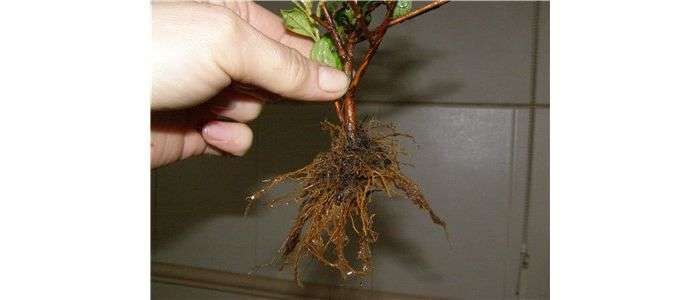



After the expiration of the daily period, the soil in which the culture was planted is covered with ice. This is a prerequisite for a successful azalea resuscitation. Also, you should not allow direct exposure to the leaves and stems of the plant to direct sunlight, since at this stage it needs cold.


The soil into which the rehabilitated bush is planted must be loose, ash or activated carbon is added to it. Boric acid contributes to faster recovery - it is added in small quantities to settled water for irrigation (4-5 drops per liter of water). With this solution, the azalea is watered for several days until the first positive results appear. After the bush comes to life, the pot is rearranged on a layer of wet expanded clay, and the top layer of soil in the container is covered with coniferous needles. This maintains the temperature balance and the required level of moisture in the soil.
Prophylaxis


The main components of prevention are correct watering, moderate feeding, adherence to the temperature and light regime.
- For watering, take water at room temperature, do not flood the plant.
- Once a month, water the azalea with water with the addition of boric acid (1-2 drops per 1 liter).
- Remove excess stems and fallen parts in a timely manner.
- Feed during any period except winter.
- Change the pot and soil as you grow.
What to do when leaves fall
It is advisable to know at least something about rhododendrons before settling them at home. Azalea, due to the complexity of care, is called a capricious beauty. But if she settles in comfortable conditions, she will delight the owners with a healthy look and lush flowering. You just need to build up care for her so that everything is balanced.
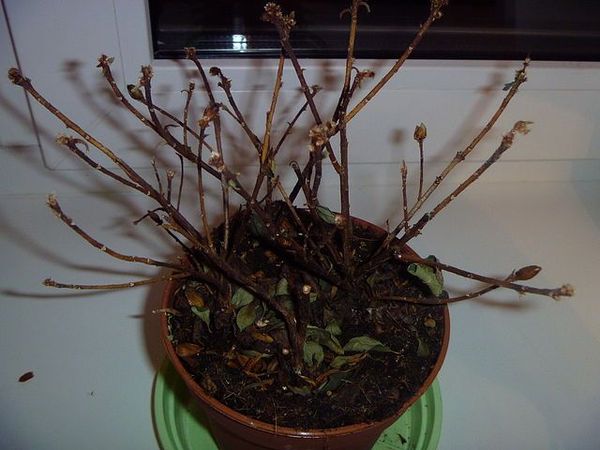

Azalea feels great when the air temperature does not exceed +22 ° C in summer and +15 ° C in winter. In this case, it should be sufficiently light, but without direct sunlight. It should be humid in the pot and in the air (80%), but should not be sprayed during flowering. The soil needs acidic. Trouble begins when these conditions are violated.
If the leaves begin to dry out, change color, become stained, you need to find out why this is happening and eliminate the cause. Leaves can fall off very quickly. They turn yellow as a result of an attack of pests - then you need to quickly take action. And if a lot of calcium has accumulated in the soil, then adding a little citric acid to the water will help.
The main reason for leaf fall is excessive dryness and high air temperature. As soon as the greenery begins to dry, you need to lower the air temperature (this way the plant will recover more easily), pour with settled acidified water, spray the flower.
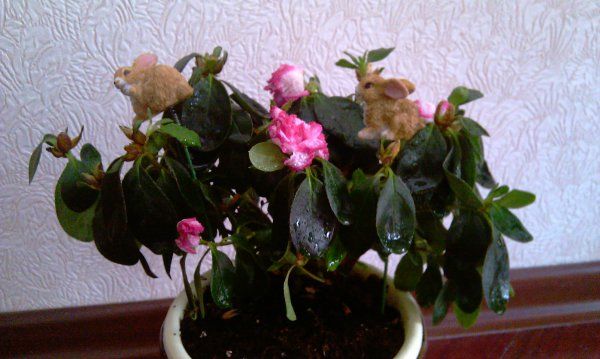

If the azalea dries up, give it a cool shower. Most likely, tap water contains a lot of salts and unnecessary impurities (which is why it is defended), so you will have to use a watering can with a fine sieve to bathe it with clean, settled water with the addition of citric acid. You can immerse the pot in a bowl so that the water is 2 cm above the edge, leave it for 20-30 minutes, then let the excess water drain. Just fill the flower with acidified water!
If the azalea is withered
What to do in the event that the azalea has dried up, completely losing its leaves? Do not rush to throw it away, even if it is dry. If the roots are still alive, that is, they are not dry, then the plant can be reanimated with water, cooling and boric acid. You just need to be patient.
First you need to get rid of the old soil. To do this, the plant is removed from the pot, the roots and a clod of earth are poured with clean water. As the soil becomes soaked, slowly and carefully remove (wash) it with your hands, you can substitute the soaked roots under a stream of water and rinse. Then the plant can be planted in new soil, purchased specifically for azaleas and laid on a high-quality drainage layer in a new pot. It is advisable to add wood ash or activated carbon to the soil, put a layer of pine needles on top. The transplanted flower should be placed in a softly lit place with an air temperature of no higher than +20 ° C and left until morning.
Reasons why azalea leaves dry. Methods to deal with the problem
What to do if azalea leaves fall off and dry? First you need to find out the reason for this phenomenon. There may be several of them.
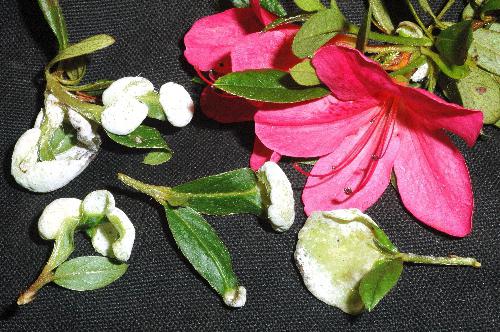

One of the reasons azalea leaves dry and curl up may be the azalea moth. It will not be difficult to find it, since this insect is large enough, has the shape of a caterpillar. To get rid of the misfortune, you need to manually collect all the insects and then treat the plant with special chemicals.
If the azalea is not completely dried up, how to spat the plant? The situation when the leaves do not fall, but simply dry, may indicate a dry air. This may be due to a high room temperature or the location of the flower pot in a sunny location. However, there is no need to panic if some of the leaves have dried up immediately after flowering. This process is quite natural. If the leaves dry out during flowering, then most likely the plant lacks moisture.
Is there a solution to the problem when the azalea has dried up? How can I save her? You can solve the issue of dry leaves by increasing the amount of watering. You can use melt or rainwater. It is recommended to water the plants with acidified water once a month (add 5 drops of lemon juice to 1 liter of water).
How to reanimate after pests
Diseases and pests can bring the plant to a complete loss of leaves, but before you start restoring, you need to completely destroy the parasites. Rhododendron bug, mealybug, spider mite, scale insect are the most common pests that feed on plant sap, weakening it, leading to loss of leaves, and then to death.
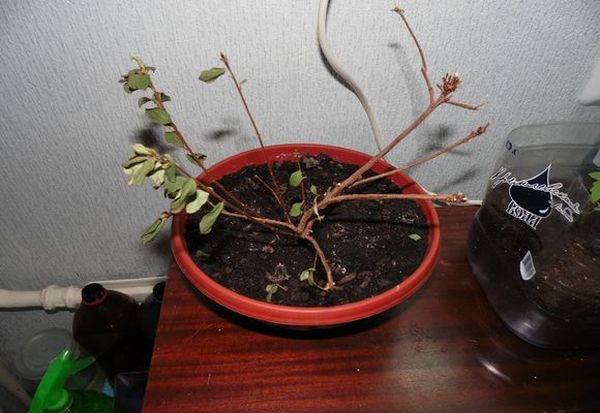

First you need to mechanically remove all parasites. To do this, use a cotton swab moistened with soapy water.Then they use special means that destroy insects and their offspring. It can be infusion of tobacco, "Karbofos", "Diazinon". It is very important to process not only the flower itself, but also the window sill, window frame and glass, near which it was located.
Having got rid of the reason why the azalea damaged by pests has dried up, you can start restoring the plant.
Affected leaves need to be removed (if they have not fallen off themselves), bare branches should not be cut off. In order for the azalea to revive its branches, it must be in comfortable conditions, but it is desirable to increase the air humidity even further by covering the plant with a transparent lid (bag, jar). To enhance immunity, it is sprayed with a solution prepared from the drug "Elina". Watered often (daily or every other day) with acidified settled water.
How to reanimate after illness


Azalea diseases are the result of care errors. They can be caused by changes in air temperature and humidity levels. If azalea leaves turn black, then the cause may be the Black Triassic or infection with fungal diseases. Septoria (red-yellow spots with black dots), cercosporiasis (brown spots with red edges on the lower side of the leaf), phyllostictosis (brown or gray spots) are characterized by the presence of spots that appear and grow on the leaves and stems of the plant. Late blight affects the roots, and indicates the twisting and drying of the leaves, which first darken, starting from the very tips, change color, and then curl and fall off.
Special drugs that need to be used as early as possible will not allow these diseases to progress: Bordeaux liquid, "Fundazol", "Ditan", "Topsin-M" or other fungicides. With verticillosis, the base of the stem darkens, and not the leaf, it can rather lead to death. Timely treatment with copper sulfate or fungicides will save you. The sooner the disease is established, the sooner the treatment will begin, which means there will be more hope for the complete recovery of the plant.
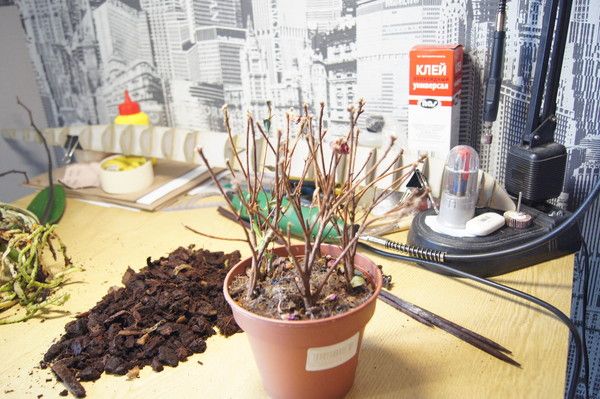

After using special preparations, it is necessary to destroy all affected parts of the plant in order not to give the disease a chance to return. An azalea that has undergone illness needs recovery procedures no less than after an invasion of pests or drying out due to poor care. The main goals are the same: restore immunity, improve conditions, and help absorb nutrients.
Azalea is certainly transplanted into new soil, be sure to check the condition of the roots. Then apply frequent watering and spraying with water with boric and citric acid alternately, sometimes using Elina solution to enhance immunity.
It is important that at this time the air temperature does not rise above + 20-22 degrees, and the lighting is soft without direct sunlight.
Description of the problem
Definition
A dying plant is a plant that has lost the rigidity of non-woody parts and the amount of water evaporated by the plant is greater than the amount of water entering them from the soil.
Appearance, photo
- The leaves are soft, yellowish, the tips of which begin to take on a brownish tint and fall off (about what a florist needs to do if azaleas fall off, and also partially or completely blacken the leaves, described here).
- Dried branches with dead buds.
- The top of the stems looks down.
The photo below shows a rhododendron that dries up:
What is the danger for the plant, can it be saved?
Attention. If you do not take, seeing such an appearance, resuscitation measures, drought will reach the roots and the plant will inevitably die, then you will have to bring the azalea back to life using the most complex methods, which do not always lead to a positive outcome.


